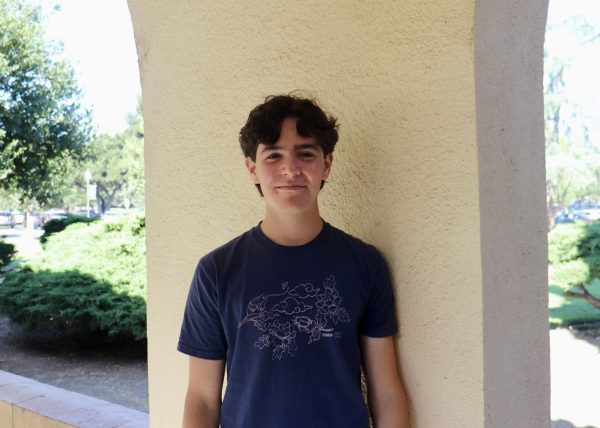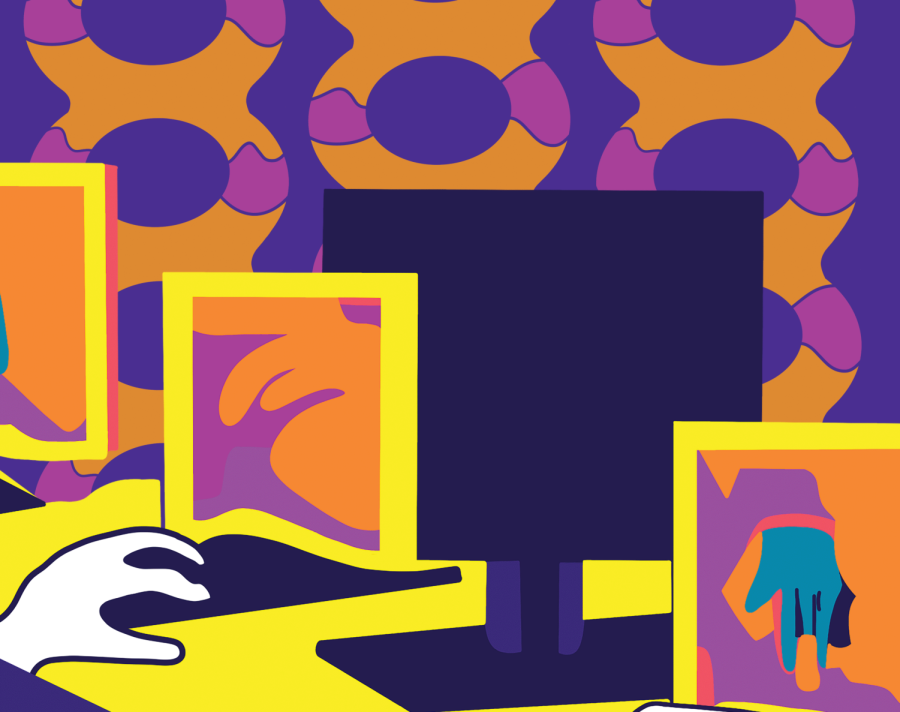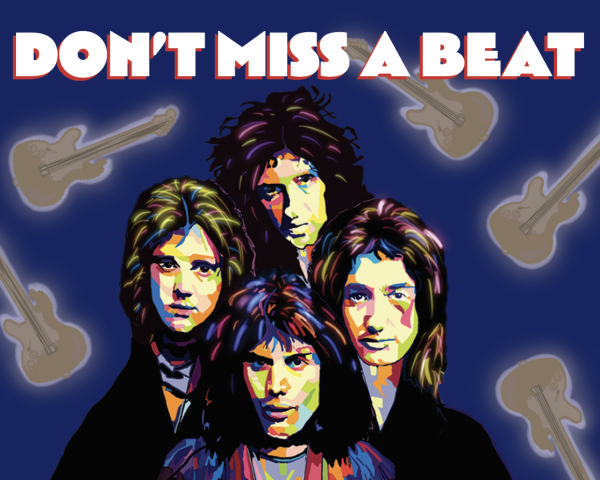Artistic Intelligence
Computers are taking over the world. Is the art industry next?
The Electronic Numerical Integrator and Computer (ENIAC) weighed 30 tons and needed a 1,500-square-foot room to house the 40 cabinets, 6,000 switches and 18,000 vacuum tubes that made up the machine. With the help of trained mechanics, the ENIAC could solve math problems. One might compare it to a big calculator.
The John von Neumann Numerical Integrator and Automatic Computer (JOHNNIAC) came next. The JOHNNIAC was slightly lighter than its predecessor, weighing in at just over two tons. It was strictly used for scientific research.
In the 1960s, the Programma 101 became the first desktop computer. Reserved for lab settings, the Programma 101 had a printer built in, which was groundbreaking for the time.
In the 60 years following the Programma 101, computers have come a long way. With the development of powerful artificial intelligence, such as AI powered art generators, computers are able to generate products more intricate than what might appear on a high school math test. The advancements of technology provide everyday people the capability to create content worthy of being displayed in the Louvre.
In fact, these AI art generators might produce something reminiscent of what is already on display in the Louvre. Because AI art is created by algorithms that categorically analyze and compile thousands of images on top of eachother, nothing they create is completely unique.
“The thing with AI is that it’s based on computers and computers are not creative,” Art Spectrum and AP Art History teacher Sue La Fetra said. “They will just follow instructions and they’re coming up with really sophisticated looking products, but it’s just copying stuff that’s already been done.”
At a technical level, this is not likely to change. Ely Greenfield, the CTO of Digital Media at Adobe, believes that at their base, AI generators are still not creative.
“What [the computers] are doing is they are seeing a bunch of data points, different images that we’ve said are good images, and then it’s interpreting from there,” Greenfield said. “It’s only ever going to make things that are somehow a blend of the things that it’s seen.”
With this in mind, there is discussion of how creative AI really is — if it is creative at all. Isaac Kauvar, a Postdoctoral Fellow at Stanford University, working at the intersection of artificial intelligence, neuroscience and psychology, believes there to be two main components of creativity; diversity and judgment are imperative in separating randomness from artistry.
“There has to be this process in creativity where you meander through some things sort of combining things in new ways,” Kauvar said. “You also have to have this other component where you’re actually judging the ideas and determining that they are good.”
While anyone can generate something random that is technically new, being able to determine originality and what makes something exciting is often where people find a distinction between machine and human artists.
“[AI is often] missing this key aspect of creativity, and that is the subjective filter and relevance to humans,” Kauvar said. “It’s got the diversity component but does it look good? Is it true creative genius? That may be too much to ask – it may even be an impossible thing to ask – because it’s not a human.”
Although computers may never be able to be completely creative, there are a few misconceptions about how AI Diffusion Models work. A Diffusion Model is a type of generative model which means that they are trained to generate images and data similar to what they have seen before. At their core, Diffusion Models work to recover data by removing noise.
In a training stage, this means adding increased amounts of Gaussian noise while AI learns to redeem the original image by reversing the noising process. This procedure continues until the model can generate an image from random noise by trying to remove it until a clear image is formed. Further, these models can be trained to take arbitrary noise and turn them into a picture that matches a prompt.
“We use other technology to keep poking [the AI] and say, the thing you’re generating, it should match this description,” Greenfield said. “If it’s not matching, we’re going to push [the AI] in a different direction so instead of just getting some random image, we get something that really scores high on the ‘does this text describe this image’ assessment.”
With this, AI works to not only entertain the prompt it is given, but additionally, to create its own image from scratch.
“People think it’s going in finding an image that matches my description or maybe it’s finding a couple pieces of images and putting them together,” Greenfield said. “What it is really doing is what humans do. It’s learning a sense of what is a good image from looking at billions of examples and then it is hallucinating a result.”
In many ways, this method of creating art is not unlike a human’s creative process. It’s common practice for artists to take inspiration from other artists and the world around them. Van Gogh’s art was heavily inspired by Claude Monet and other French impressionist artists of the time. Salvador Dali created some of his best known works under the influence of a group titled the Paris Surrealists. But while some similarities can be drawn between AI art and art done by humans, what differs between the Van Goghs and the DALL-Es, one of the most popular art generators, is the capability to do something new and imaginative.
“The great moments in art history happened when someone did something different,” La Fetra said. “A computer’s not going to do that.”
Put simply, at its core, a computer does not know when to break out of the box.
“Any artist will tell you that a good artist is not somebody who just follows the rules but knows when to break them and that’s what makes art interesting,” Greenfield said. “And so again, the question there is, how much can the AI help you with that?”
The limits placed on AI’s originality, due to its mechanical nature, are not the only way it is disadvantaged in terms of artistic capabilities.
“We’re able to extrapolate from more than just the images we’ve seen, right?” Greenfield said. “We extrapolate from emotion and we extrapolate from sensation, and if I asked you to draw a picture of a lonely scene, you wouldn’t just draw on what you think loneliness looks like because you would draw on music you’ve heard and things you’ve smelled. Computers can’t do that.”
With these major differences comes the debate of what role the computer is actually playing when it comes to making art. Some argue AI is the artist, while others say it is more similar to a paintbrush — a tool utilized by a human to create art.
“It’s basically just another medium for creative expression,” AI art club co-president Jeremy Yuen said. “I think that creativity really comes from the person making it, not really from the computer itself.”
In many ways, AI isn’t too different from other creative mediums that were once considered groundbreaking technology.
“It’s like when photography came out, people said ‘Is this a real way to express art, or is it cheating?’” Yuen said.
Many art purists take issue with AI, because it takes a lot of technical skill out of creating good-looking art that would take an artist many years of training if they were to paint something similar. That’s why many say AI is so special, because it makes art a lot more accessible for beginners.
“AI art generation is so appealing because when you first get into it, you can make things that actually look cool,” Yuen said. “If I started painting I really couldn’t make much besides stick figures.”
Because all of a sudden anyone can produce seemingly professional works of art with the help of AI, there is a growing concern about the future of professional artists.
“The fear is that it’ll put a lot of artists out of work,” Greenfield said. “Nobody will pay the people who previously invested heavily to get all these skills and make a living creating art because you can pay a computer a 10th of a cent to create an image instantly, rather than paying a human hundreds of dollars to do it over the course of a few hours.”
However, there are certainly applications that take advantage of AI to do jobs that human artists simply could not do, and therefore don’t encroach on the human art industry. In 1715, Rembrandt’s “The Night Watch” was cropped on all four sides before it was moved to a new hall because it would not fit otherwise.
“Professionals utilized the AI art generators to imitate the artist’s style and fill in the gaps of the painting,” Yuen said.
With this great accessibility, and as technology gets increasingly powerful, questions surrounding ethics arise regarding both copyright infringement and implicit bias.
Because AI generates art by analyzing pre-existing images, sometimes the output image is not very different from the reference. Therefore, some propose a mechanism that certifies whether or not enough has been changed from the original image to be considered unique.
“This idea of combining ideas is not fundamentally a problem,” Kauvar said. “It’s more figuring out what that means in terms of the mechanization and optimization and having sort of what’s the equivalent of a patent.”
Aside from originality, one concern with the art AI produces is its diversity. Due to the mechanics and training of the technology, it is easy for it to inherit biases that are present out on the internet historically, and still to this day.
“One of the questions that always comes up here is if you go into one of these generative AI technologies and you put in the prompt of doctor or lawyer, are you going to get a bunch of white men in lab coats?” Greenfield said. “[To combat this] we ask: is it representing the reality of what people are looking for and what society represents, or is it representing historical biases that we don’t think are accurate and net positive.”
To this end, AI has a long way to go; it is still in its infancy and has room to grow exponentially.
“We should just keep our minds open,” La Fetra said. “It’s intriguing the idea of robots taking over the world and world domination.”
Each person has their own idea of the capabilities of this technology — not all as extreme as it taking over the world — which puts the impact of AI art generation in the hands of those who utilize it.
“The technology is incredibly exciting and disruptive,” Greenfield said. “The goal is to get it disruptive in a way that empowers content creators and artists to be able to better achieve their visions.”
Print Issue
Please click on the three vertical dots on the top right-hand corner, then select “Two page view.”

2022-2023 Staff Writer
2023-2024 Editor-in-Chief
I joined C Mag because it is a great community on campus! My favorite part about being a part of...

2022-2023 Staff Writer
2023-2024 Editor-In-Chief
I joined C-Mag because I'm really passionate about the arts, music, and just about anything C-Mag...







